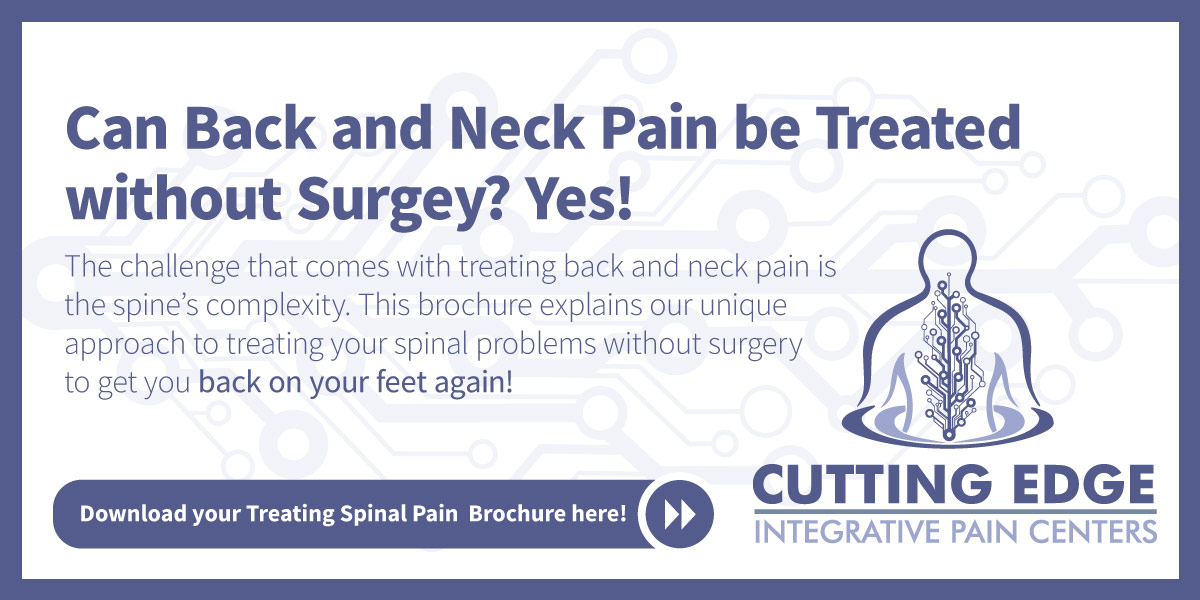These days, spinal fusions are a very common spinal surgery. However, spinal fusions present many challenges for patients in the short-term and long-term, including potentially developing Adjacent Segment Disease (ASD). Those with ASD may experience the same recurring pain they had prior to spinal fusion surgery. Let’s take a look at how this troubling disease occurs.
Want to Treat Your Wrist Pain Without Surgery?
Find Out How Here!
What is Adjacent Segment Disease?
Adjacent Segment Disease (ASD) is a degenerative condition that results from the development of complications after spinal fusion surgery. During spinal fusion surgery, a surgeon removes a vertebral motion segment of your spine and fills the gap with bone graft, rods, and spacers. These materials fuse with the vertebrae above and below the solid mass of bone. Unfortunately, surgical fusions in the spine sometimes cause problems above and below the surgical site.
Spinal fusion is not the only cause of ASD, a decline and deterioration in your spine, such as those caused by aging, can also cause this condition.
How does Adjacent Segment Disease Occur?
The surgical fusion of your vertebrae changes the motion of your spine and how it operates. This can also cause abnormal loads of stress to the nearby joints both above and below, making them work harder. As a result, that area of the spine may weaken rapidly, resulting in adjacent segment disease. ASD can lead to several degenerative disorders including herniated or building discs, spinal stenosis, and scoliosis. Some symptoms that are associated with ASD include lower back pain, neurological symptoms such as numbness, tingling, or weakness, and pain when walking or having difficulty standing.
What are the Risk Factors?
There are risk factors of spinal fusion procedures that can lead to ASD. Knowing and understanding the risk factors is important as it can help you and your doctor understand the risk factors associated with this procedure:
-
- Old age
- Tobacco Use
- Having Degenerative Spinal Disorder
- Are there Herniating Discs?
- Are there Narrowing Discs?
- Multi-Level Spinal Fusion
Alternative Solutions to Spinal Pain
Spinal fusion has helped many with back pain, but for those with high-risk factors, there may be alternatives to spinal fusion.
1. Stop the Use of Tobacco
Not only is tobacco a risk factor for spinal bones failing to heal after surgery, but the substance also contained in tobacco reduces blood flow to the spine and potentially accelerates the degeneration of the spine leading to pain and abnormal motion.
2. Physical Activity
Exercising and staying active is a great way to improve bone strength, just simply walking is a great way to relax your spine. Also doing physical therapy and stretches can help.
3. Neuromodulation Therapy
Neuromodulation therapies include several types of treatments including spinal cord stimulation. Spinal cord stimulation is a therapy that masks pain signals before they reach the brain. The stimulation delivers electrical pulses to the spinal cord which carries the signal to their nerve fibers in the spinal cord. Spinal cord stimulation does not completely negate the pain signals, rather, they replace the sensation of pain.
Spinal and back pain can have a tremendous impact on your everyday life. Spinal fusions are not the only way to fix this, there are alternative solutions. At Cutting Edge, we specialize in this type of care and with our experience, we have successfully administered these treatments to numerous patients, who are now living pain-free lives.


